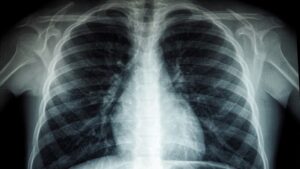[ad_1]
HOW DOES FMD DISEASE SPREAD?
FMD virus, which is not resistant to chemical agents, is not affected (stable) at pH 7.0-7.7, but is inactivated in a short time under acid and alkaline conditions. Illness spreads directly and indirectly.
The most obvious way of spreading the disease is through the respiratory system of the virus in the air. Infected or incubating animals respiration, skin, secrets and extracts, milk and semen spreads the virus. The disease can also be transmitted by contaminated animal products, contaminated vehicles and tools, humans, wild animals, birds, wind and transportation vehicles.
In humans, it is reported that they rarely get the infection by contact with infected animals or by infected meat and dairy products.
SYMPTOMS OF DAWN DISEASE
Fever, loss of appetite, depression and decrease in milk yield are the first clinical findings in cattle. Within 24 hours, saliva flow begins and vesicles form on the tongue-gingiva. Vesicles can be encountered in the interdigital region, coronary region, breast skin, oral and nasal mucosa. Large ulcerative sores may form with rupture of the vesicles.
Although the wounds (lesions) on the tongue usually heal in a few days, the lesions on the feet and in the nasal region are mostly exposed to secondary (secondary) bacterial infections. As a result of secondary bacterial infections, pneumonia and mastitis may occur, and nails may fall.
The disease has a milder course in sheep and goats. The disease is usually characterized by lameness in sheep, and lameness persists. Lesions in the mouth are smaller and shorter in duration than lesions in cattle. Generally, the economic losses caused by the disease are lower than those of cattle, and clinical manifestations are determined only by careful observation.
Although the death (mortality) rate of foot and mouth disease is low, myocarditis cases resulting in death can be seen in young animals as a result of localization of the virus in the heart. The transmission (morbidity) rate of the disease is high, and the economic losses due to the rapid decline in meat and milk yields are important.
Although clinical findings suggest the disease, the definitive diagnosis is made using virological or serological methods. In differential diagnosis; lameness, mucosal erosions, drooling, nasal discharge and infections causing breast lesions should be considered.

4 MAIN STRATEGIES FOR DISEASE
There are 4 main strategies applied for the control of foot and mouth disease. These:
A. Cut
B. Quarantine
C. Vaccination
In order to decide which of these methods or methods will be applied in a country or region, first of all, it is necessary to make profit-loss analyzes by taking into account the socio-economic status, the status of animal assets and epidemiology in terms of foot and mouth disease, and climatic-geographical conditions.
CUT:
It is the slaughtering of animals with foot-and-mouth disease and animals that have come into contact with them. The aim is to consume (eliminate) the main virus source and to break the life course (cycle) of the virus. The disadvantage of this method is that it causes great loss of animals.
This method is used in countries that have abandoned the vaccination program, where foot-and-mouth disease is sporadic. However, this method, which is economical in countries where the spread (incidence) of the disease is low, is not only economical and social acceptance is very difficult in countries where the disease is common.
QUARANTINE:
Considering the epidemiological situation of the foot-and-mouth disease virus and the experience gained, it is clear that results cannot be obtained with this method alone. However, it makes sense when applied together with other methods.
ASHILAMA:
The aim is to ensure a high antibody level in the animal population (population) of countries where the disease is common. For this purpose, it is aimed to provide resistance against the virus in the population with regular and intensive vaccination programs. However, quarantine and preventive (prophylactic) measures are needed for success. Factors such as the epidemiology of the disease, environmental factors, and the culture level of the farmers are also important in determining the vaccination strategy.
[ad_2]






